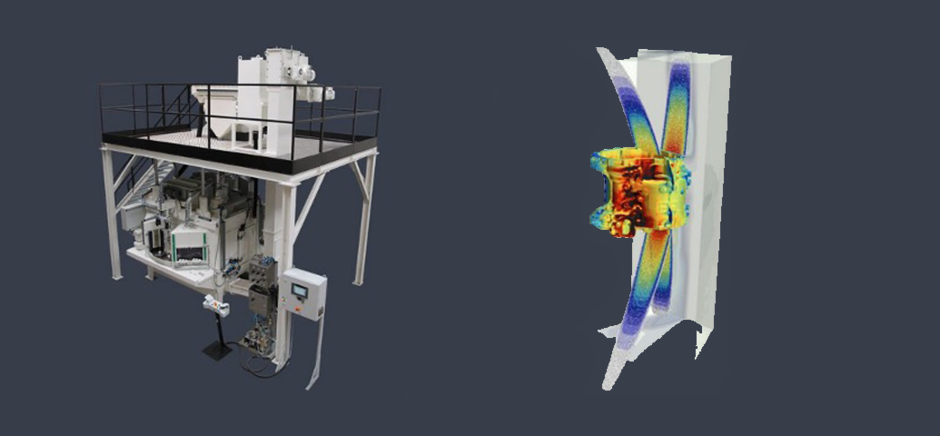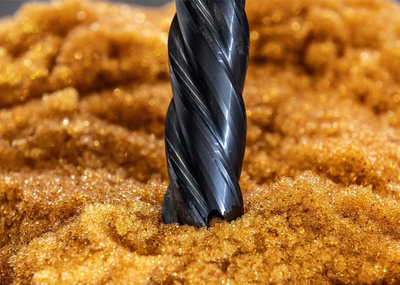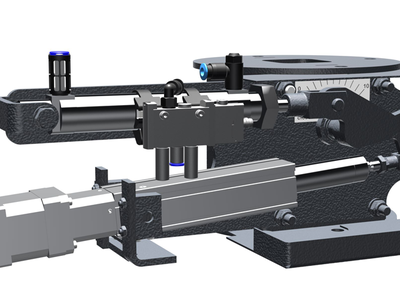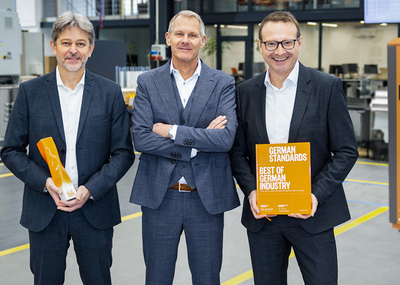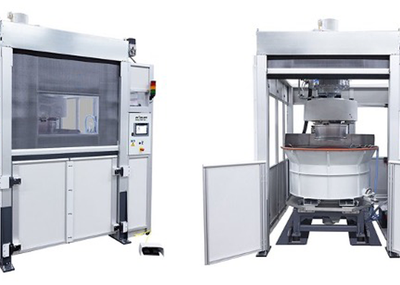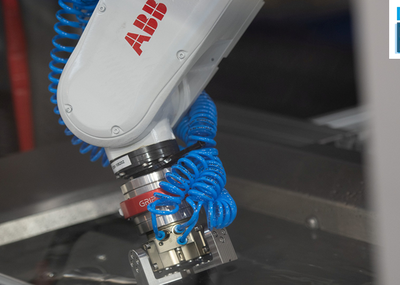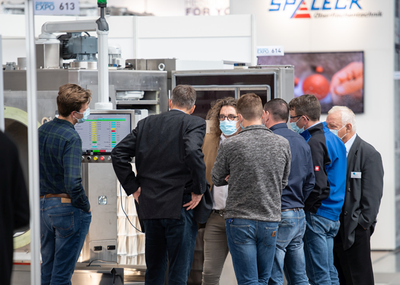Shot peening, the “hammering” of work pieces with precisely defined blast media, is an indispensable operation in industries such as automotive and aerospace. By inducing a residual compressive stress into the work pieces, the shot peening operation substantially improves their long-term resistance against tensile and bending loads. The process is used for treating toothed, steering and transmission components, also for springs, drive- and crankshafts and all kinds of turbine blades. A significant advantage of the shot peening operation is that the component weight can be reduced without impacting its mechanical load capabilities. This is particularly beneficial in electric vehicles, because it increases their operating range and reduces their energy consumption. Due to changing work piece structures and shapes E-mobility frequently necessitates the alteration of manufacturing processes. Moreover, the customers are demanding significantly higher energy-, resource- and cost-efficiency. In other words, significant improvements in productivity and sustainability. Rösler can provide comprehensive support for such optimization projects.
Lower energy consumption by using turbines instead of compressed air blast systems
Compressed air blast systems have been the pre-dominant shot peening tools to consistently achieve the specified residual compressive stress values. A downside of the compressed air method is that it requires a lot of energy. Today innovative technical improvements of the turbine technology allow the precise and high-quality shot peening of a broad range of components with energy-efficient, highly productive turbines. For many peening applications costly compressed air blast systems are no longer required. The most important factors to be considered in peening operations are the work piece shape and size, the required peening results and the blast media. Based on these factors Rösler runs computer simulations of the blast pattern as well as the entire process. The simulations are followed by actual peening trials in our Customer Experience Center (CEC). Since the CEC is equipped with a broad range of turbine and compressed air blast systems, the shot peening trials can be conducted under actual production conditions. With an in-house X-ray diffractometer the peening trials can be quickly evaluated to determine which process parameters and blast media will generate the required results.
A joint optimization project between a leading European automobile manufacturer and Rösler resulted in energy savings of 30 % and a 50 % increase of the shot blast capacity. Based on the convincing project results, in the meantime this customer purchased four shot peening machines equipped with turbines.
Less equipment wear and higher productivity
Sometimes a review of the existing shot blasting parameters can help to significantly improve the entire peening process. Once they are established, the process parameters are frequently no longer questioned. Such carelessness can result in high equipment wear and unused potential for process improvement.
Perfectly calibrated process parameters, including the optimal media selection, guarantee high peening qualities, less equipment wear and low operational costs. If a review of the shot blasting parameters in an existing machine is not sufficient, a retrofit can be the right solution. Among other things this includes upgrading the machine with more productive components such as more powerful turbines or the development of work piece fixtures for new or modified work pieces. Optimization of the blast pattern must always be part of the considerations.
In all instances shot peening trials in the CEC along with the evaluation of the results by X-ray diffraction, special tests of the peening coverage and, if needed, surface roughness and light-microscopic measurements, will ensure that the required peening specifications are achieved. Very important for resource and cost efficiency of the process is the selection of the right blast media. A blast media analysis will always help to determine if the current media is right for the respective application.
Wet or dry shot peening?
Shot peening with compressed air blast guns can be run as a wet or dry process. Advantages of the dry peening method are a higher blast intensity and the targeted blasting of specific surface areas. In addition, the entire process and the blast media can be precisely controlled. The wet blasting technology prevents the media from getting embedded in the work pieces, and it produces a lower surface roughness. Since wet blasting is more gentle than dry blasting, it is the ideal method for treating delicate work pieces with thin walls without warping them. Each of the two peening methods has its advantages. Therefore, the chosen method must be a perfect fit for the respective application, especially with regard to cost-efficiency and quality of the peening results. Rösler offers a broad spectrum of different machine types. This allows a totally objective equipment selection and ensures that the customers get the best possible solution for their specific requirements.
All steps regarding process alteration and optimization, including the processing trials and process evaluation, can be modified so that the shot peening equipment can be quickly adapted to changing production conditions. This ensures absolutely consistent, high-quality peening results throughout the entire equipment life. And it guarantees that all demands for energy-, resource- and cost-efficiency are fully met.

